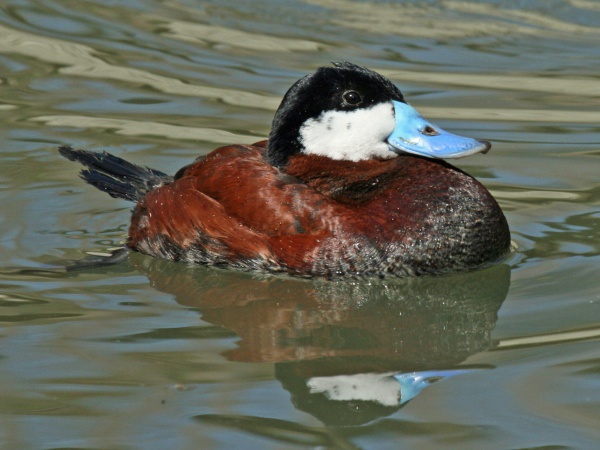Facts About Ruddy duck
The ruddy duck is a small, striking North American species belonging to the group known as stiff-tailed ducks. Its name derives from Greek, meaning "sharp tail" and the species epithet "jamaicensis" suggests a connection to Jamaica. Some experts even consider the Andean duck to be a subspecies of the ruddy duck. Various subspecies of the ruddy duck are found across North America, as well as in central and southern Colombia to Chile.
These ducks are easily identifiable by their stout bills, long stiff tails, and peaked heads. During the summer, males exhibit black caps, chestnut bodies, and striking blue bills, whereas females and young males exhibit more muted brownish tones. Ruddy ducks prefer to nest in marshy lakes, where females build nests from grass, concealed within dense vegetation near the water. These ducks migrate, spending winters in coastal bays, and their diet consists of seeds, roots, aquatic insects, and crustaceans.
In 1948, conservationist Sir Peter Scott introduced ruddy ducks to the UK. Some of these ducks later escaped into the wild, becoming invasive in Great Britain and spreading across Europe. Their aggressive courting behavior and propensity to interbreed with the endangered white-headed duck in southern Europe raised concerns. Subsequently, culling efforts in the UK and other European countries significantly reduced their population by early 2014.
